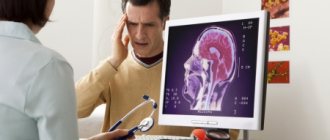Postural instability is a syndrome in which there are difficulties in maintaining balance in a certain position or when changing positions. Quite often, postural instability is observed with the development of paralysis and Parkinson's disease, although the development of postural instability as an independent disease is not excluded. The syndrome develops as a result of disorders in the brain: damage to the basal ganglia, brain stem, frontal lobes. Postural instability is characterized by an unsteady gait and a tendency to fall. In severe cases, patients are unable to stand or sit on their own.
Treatment of postural instability is successfully performed at the Yusupov Hospital. Qualified neurologists and psychotherapists use high-tech equipment and modern methods for treating diseases of the nervous system in their work, which allows them to obtain the most favorable results.
Agoraphobia: postural phobic instability
Postural instability occurs as a result of the development of a phobia in a person. Agoraphobia is a fear of open spaces and crowds of people. With this mental disorder, the following fears arise:
- fear of a large number of people,
- fear of an unusual situation appearing in public,
- fear when walking through a large square or street,
- fear of visiting public places that cannot be left unnoticed (theaters, restaurants, public transport).
Agoraphobia is usually associated with a fear of public embarrassment in the event of a panic attack. Since a panic attack usually occurs spontaneously, constantly waiting for it to occur makes the situation worse. A person is afraid to leave his comfort zone and avoids situations that can cause a feeling of fear. During a panic attack, a person with agoraphobia may develop postural phobic instability. Its characteristics will be:
- absence of objective reasons for imbalance, dizziness and instability when walking;
- dizziness develops during attacks of fear, while a person may lose touch with reality and experience short-term swaying;
- An attack of postural instability occurs in certain situations associated with a phobia.
In a person with agoraphobia, the number of situations that lead to postural instability gradually increases. As a result, there is a growing desire to exclude such situations in life, resulting in isolation and detachment. People with agoraphobia may not leave their home for weeks or even years. Postural phobic instability is more associated with emotional distress than with physical brain disorders.
Diagnostics
As a rule, diagnosing an anxiety-phobic disorder is not difficult for an experienced neurologist or psychotherapist. Treatment should be comprehensive: medications and psychotherapy. A combination of pharmacological methods and psychotherapeutic effects will help achieve good results.
Anxious-phobic personality disorders are necessarily associated with some kind of internal trouble. If you cannot cope with your fears for a long time, then you can turn to psychologist-psychotherapist Irakli Pozharisky for a solution to the problem. Working with a specialist will help restore peace of mind.
Postural instability in Parkinson's disease
In Parkinson's disease, postural instability is one of the main symptoms of the disease. The occurrence of Parkinson's disease is associated with neuronal degeneration and disruption of the basal ganglia, which are responsible for human upright posture and gait.
Gait disturbance is accompanied by a change in body position, when the center of gravity shifts and the person leans forward. With postural instability, a person is forced to “follow” his own body, which tilts in different directions, which leads to the threat of falling forward (propulsion), backward (retropulsion) and sideways (lateropulsion). It becomes difficult for a person to start moving and stop. When picking up the pace, it is very difficult to extinguish the inertia of movement, which often leads to a fall.
Progressive degeneration of the part of the brain that is responsible for postural mechanisms and reflexes (upright posture, coordination of movements and maintaining body balance) gradually tilts the patient’s body forward. Initially, this leads to gait disturbances and loss of balance, and later deprives a person of the ability to sit and move independently. As a result, the person remains confined to a wheelchair.
What is the cause of the symptom?
Changes in the brain in Parkinson's disease
Postural instability occurs when subcortical structures called the extrapyramidal system are damaged. There are many of them: the substantia nigra, locus coeruleus, red nucleus, cerebellum, basal ganglia and others. They are located in the brain stem and in the hemispheres - under the cerebral cortex, and are ancient, derived from lower vertebrate structures.
The main task of the extrapyramidal system is to regulate muscle tone so that a person stands steadily in any position he takes. These areas of the brain also exercise control over the construction of a person’s postures and movements, and they do this without appealing to his attention.
The main cause of damage to the extrapyramidal system is Parkinson's disease. In this case, the neurons that make up the structures of this system begin to collapse. When 60-80% of their total number has died, the substance dopamine, necessary for the proper functioning of the brain, becomes insufficient. Then the basal ganglia begin to produce the excitatory neurotransmitter acetylcholine, and this activates the cerebral cortex. Normal commands that ensure muscle tone and readiness to move at the will of consciousness are interrupted. This is how postural instability appears.
Impaired muscle tone when changing posture or when moving is observed not only in Parkinson's disease. This symptom is also characteristic of all those diseases when nerve cells in the extrapyramidal system die or, accumulating the protein alpha-synuclein (that is, becoming Lewy bodies), cease to function normally. These are pathologies in which either the blood supply to the brain is disrupted, or the cells that carry nutrition to neurons die:
- encephalitis;
- dementia with Lewy bodies;
- brain injury;
- suffered a stroke if neurons in the area of the substantia nigra or a structure called the “putamen” died;
- progressive Steele-Olszewski palsy;
- corticobasal degeneration;
- brain tumors;
- Shy-Drager syndrome;
- atherosclerosis of the arteries that carry blood to the substantia nigra and other extrapyramidal structures;
- familial (hereditary) calcification of the basal ganglia;
- spinocerebellar ataxia;
- poisoning with ethyl alcohol, manganese, lead, carbon disulfide, carbon monoxide;
- Wilson-Konovalov disease;
- taking medications: antipsychotics, dopamine antagonists, methyldopa, antidepressants that affect serotonin metabolism, valproic acid salts. Less commonly, the symptom may occur when taking tranquilizers, “heart” drugs (“Amlodipine”, “Cordarone”), antifungal drugs and those that, by blocking histamine receptors, reduce stomach acidity.
Postural instability: treatment
To treat postural instability syndrome, it is first necessary to exclude the disease that causes it. In the case of psychological reasons for the development of the condition, the help of a psychologist is necessary to eliminate the phobia leading to postural instability. Psychotherapy can take a long period of time, depending on the degree to which fears deepen in the patient’s subconscious. To alleviate the patient's condition, antidepressants and sedatives may be prescribed. The choice of drugs is determined only by the attending physician, depending on the individual characteristics of the patient. You cannot prescribe such drugs on your own, which can worsen your health.
A multidisciplinary approach is used to treat postural instability associated with Parkinson's disease. Currently, Parkinson's disease is considered incurable, so all therapeutic measures are aimed at alleviating the patient's condition and reducing the rate of development of the disease. The main drugs that eliminate movement disorders are levodopa, dopamine receptor agonists and MAO-B inhibitors. Since Parkinson's disease is associated with a decrease in dopamine levels in the brain, it is replenished with the help of these medications.
If conservative therapy is ineffective, pallidotomy can be used to eliminate movement disorders. This is a brain surgery in which partial destruction of the globus pallidus occurs. Neurostimulation is also used to treat Parkinson's disease - a minimally invasive neurosurgical operation with targeted simulation of certain brain structures using an electric current.
Specialists at the Yusupov Hospital take on the most difficult cases and achieve maximum therapeutic effect. By visiting the Yusupov Hospital, the patient receives qualified medical care and psychological support, which can significantly improve his quality of life.
The Yusupov Hospital is located near the center of Moscow and receives patients around the clock. You can make an appointment and get advice from specialists by calling the clinic.
Author
Irina Gennadievna Smolentseva
Head of the Research Center for Parkinson's Disease, neurologist, Doctor of Medical Sciences, Professor
FROM THE AUTHORS
In the modern age of information technology, it is quite simple to obtain information about what vegetative-vascular dystonia, panic attacks, obsessive thoughts and actions are. However, the question of how useful and, most importantly, harmless this information will be for a person in an anxious state remains open. You are probably familiar with the situation when, in an effort to get a magic pill, you grab onto several methods of “cure” at once and, without bringing any of them to the end, you convince yourself that nothing else will help you. It is also possible that you follow a certain method, but it does not bring results, and when you choose another “healing” tactic, you come across the opposite information, and as a result, you become completely confused and fall into despair.
This book provides you with a unique opportunity to put an end to the endless search for a miracle cure for getting rid of your problems, to gain comprehensive and reliable information about what is really happening to you, and most importantly, to begin an interesting path to a happy and healthy life, free from neurosis and various manifestations of anxiety, fears and phobias. It is quite possible that while reading the book you will come across information that will contradict the methods you have previously tried. In this case, you need to remember that since you are holding this particular book in your hands, it means that the previous methods did not help you, and therefore it is pointless to cling to old knowledge, but it makes sense to fully concentrate on the proposed method.
However, the main message of the authors of the book is the following: if you want to achieve the desired result, it is imperative to put into practice all the proposed methods and put all the information into practice. Without this, the efficiency will tend to zero, since there will be no action itself. You can read a million books, but continue to remain stuck on your problem, or you can carefully study one and get a very good result, but only by putting the acquired knowledge into practice. It is important to understand that it is impossible to quickly get rid of an anxiety disorder, because... Throughout your adult life you have been creating maladaptive behavior habits, over many years becoming an Olympic champion in blowing your own brain. Only you keep yourself in your condition, and only you can help yourself.
The good news is that the path back to a happy life will take much less time than it took you to voluntarily drive yourself into your current state. But this will only happen if you show due diligence and consistency in your actions. To achieve a long-lasting and sustainable effect, you will have to work and endure a lot. You will get the desired result, but the main thing is practice, that is, constant work on yourself, the key element of which is one hundred percent responsibility. It was your habit of shifting responsibility for your life to other people and circumstances, it was your desire for someone else to solve all the problems, it was your demands that everything happen only the way you want, that led you to the problem.
Of course, you may be offended by these words and continue to adhere to an infantile behavior, but the sooner you realize that you are not ideal, the faster and more productive your work on yourself will be. Therefore, the first thing you need to leave behind the threshold of your former life is self-pity, attempts to make excuses and blame fate and other people for your misfortunes. By the way, you will also have to say goodbye to the habit of judging and criticizing others. Only you yourself are the creator of your life, and what is currently happening to you is your goal, therefore your life is in yours and only in your hands. And in your hands is an effective practical guide that will become your assistant on the thorny but exciting path to a new life.
Causes
Redistribution of blood when body position changes
The term “hypotension” literally means “low blood pressure,” but orthostatic hypotension is a sharp decrease in blood pressure after a change in body position in space. Changing position causes blood to flow from the head to the feet. In response to this process, the heart rate accelerates and blood vessels constrict, leading to a rapid increase in blood pressure.
Within a short time, the body can return blood to the head. However, if this reaction occurs too slowly, cerebral hypoperfusion occurs. It is not orthostatic hypotension that is life-threatening, but the resulting injury caused by loss of consciousness. Often, with age, the ability to normal orthostatic reaction is partially lost. But some diseases are also considered a risk factor for the development of orthostatic syndrome. These include primarily diabetes mellitus and diseases of the nervous system.
Another possible cause of orthostatic dysregulation is the use of certain medications. Most often, orthostatic hypotension is caused by vasodilators - drugs that dilate blood vessels.
Blood pressure can also be reduced by diuretics, cytostatics, antiparkinsonian drugs and angiotensin converting enzyme inhibitors. Some tranquilizers, tricyclic antidepressants, opiates, psychostimulants, insulin, muscle relaxants, alcohol and cannabinoids such as marijuana are triggers for the disease.
Rarer causes include heart failure, congenital heart defects, hypothyroidism, and mental disorders (phobias, trauma, or depression).
Symptoms
Orthostatic dysregulation is characterized by nonspecific symptoms. As a rule, they appear after a sudden change in body position. If a person lies down for a longer period of time, symptoms may be even worse.
Common symptoms of orthostatic hypotension:
- Feeling cold.
- Nausea.
- Pallor.
- Excessive sweating.
- Inner restlessness.
In addition, tachycardia, a feeling of fear, dizziness, headache, a feeling of unsteadiness while walking, tinnitus, spots before the eyes and a feeling of emptiness in the head are often observed.
Due to symptoms, the patient is forced to sit or lie down.
In this case, symptoms usually disappear quickly. In some situations, brief fainting is also possible, which can lead to injury.
Symptoms
Orthostatic dysregulation is characterized by nonspecific symptoms. As a rule, they appear after a sudden change in body position. If a person lies down for a longer period of time, symptoms may be even worse.
Common symptoms of orthostatic hypotension:
- Feeling cold.
- Nausea.
- Pallor.
- Excessive sweating.
- Inner restlessness.
In addition, tachycardia, a feeling of fear, dizziness, headache, a feeling of unsteadiness while walking, tinnitus, spots before the eyes and a feeling of emptiness in the head are often observed.
Due to symptoms, the patient is forced to sit or lie down. In this case, symptoms usually disappear quickly. In some situations, brief fainting is also possible, which can lead to injury.
How to understand what is causing it?
PET-CT picture for Parkinson's disease
To do this, you need to visit a neurologist. The specialist will make a primary diagnosis of parkinsonism and prescribe examinations that will help find the cause of postural instability. This:
- positron emission tomography;
- dopplerography of neck vessels;
- determining the level of copper in the blood;
- computed tomography of the brain and cervical spinal cord;
- electroencephalography;
- test with the introduction of the drug "Levodopa".







